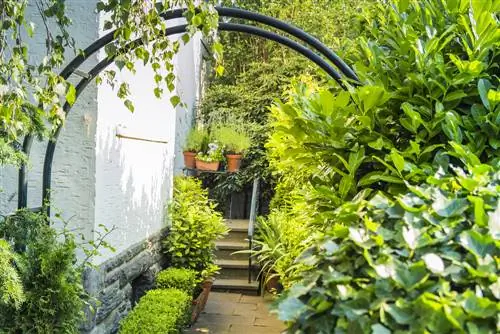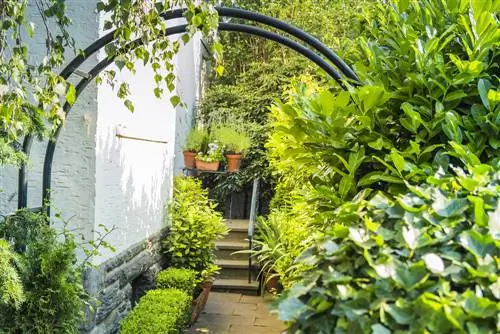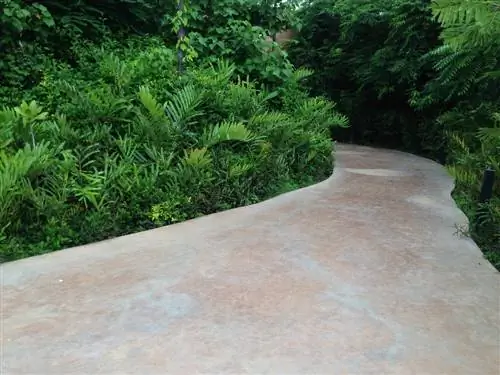- Author admin [email protected].
- Public 2023-12-16 16:46.
- Last modified 2025-06-01 06:02.
In the front garden, a path primarily serves the purpose of guiding residents and visitors safely to the front door. Side paths lead to the garage, the hidden garbage cans or the cozy seating area. Anyone who limits paths to a pure utility function overlooks the potential for creative design elements. These tips show how you can decorate sidewalks in the front yard.

How do I create a decorative path in the front yard?
A decorative path in the front yard reflects the architectural style of the house and is well framed with plants. Choose the right path surface such as gravel, paving or polygonal slabs. Frame the path with evergreens, crested sedges or star moss, depending on the lighting conditions and garden style.
Path surface as a reflection of the architectural style - This is how it works
The successful front garden design reflects the architectural style of the house. This premise is expressed, among other things, in the choice of path surface. The following variants have proven themselves very well in practice:
- Light gravel with inserted steps made of natural stone slabs in the Mediterranean front garden
- Paving made of matching colored concrete or natural stone for a modern flair
- Polygonal panels framed by ornamental grasses for an easy-care front garden
In the naturally designed front garden, imaginative home gardeners like to use a combination of bark mulch and self-made concrete stepping stones (€21.00 on Amazon) with cheerful, colorful mosaic patterns.
Please ensure that the access path towards the entrance door is at least 120 cm wide so that two people can easily walk past each other. Side paths may be limited to a width of 50 to 60 cm.
Frame the path decoratively with plants - this is how it works
When colorful flowers and perennials line the path, your guests will feel warmly welcome. Depending on the chosen garden style, delicate grasses, flowering ground cover plants or low hedges are also suitable for sprucing up a path in the front garden. The following species and varieties fulfill the design task brilliantly:
- Evergreen, maximum knee-high hedge with boxwood balls (Buxus sempervirens)
- Crested sedges (Carex comans 'Frosted Curls') alternating with permanent bloomers, such as pelargoniums (Geranium)
- Star moss (Sagina subulata) as a ground cover to form fluffy cushions in stone joints
If there is a front garden on the north side of the house, shade-tolerant plant beauties are required here. Purple bells (Heuchera) or small hosta species (Hosta) give a path in a low-light location a representative appearance all year round.
Tip
If you design your front garden in the shape of a cottage garden, the paths will also serve as a route for the wheelbarrow to carry out maintenance work. Therefore, measure a sufficient width so that you do not damage bed borders or plants when maneuvering.






